On an unexpectedly hot Thursday afternoon, we pack the car and head down south for a long weekend at our happy place, the country town we hope to move to one day. Our usual accommodation is no longer available, so we have booked three nights on a farm about fifteen minutes out of town, a place that promises “forest tranquility and privacy”. It is just what we need, after what feels like weeks, no, months, of unrelenting busy-ness. As the suburbs give way to summer-dry plains and wheat-gold hills, we realise that it has been five months since our last trip down this way. Back then, the fields were painted yellow with endless rows of canola; now, the flowers are long gone, but the landscape glows in the late afternoon sun.
We arrive at the farm three hours later, where our host, a woman in her mid-seventies, waits to welcome us to her home of thirty-plus years. When she shuffles away, we sit on the restored radio chairs that belonged to her parents, and feel the stress of the week begin to leach away. That night, we sleep long and deep; it is not until the second night we hear an unruly possum clattering on the tin roof. In the morning, we take steaming cups of tea onto the verandah, sipping slowly while watching the birds - so many birds! - flit around the garden, and the cows and newborn calves graze in the cleared paddocks that used to be a blue gum plantation. We make toast, spreading it with thick home-made plum jam, and bring it out to the verandah, taking small, sweet bites, stretching time. We hear a tractor; on cue cows make their way across the hill, disappearing behind tall marri trees, only to appear upside down in the dam’s glassy surface.
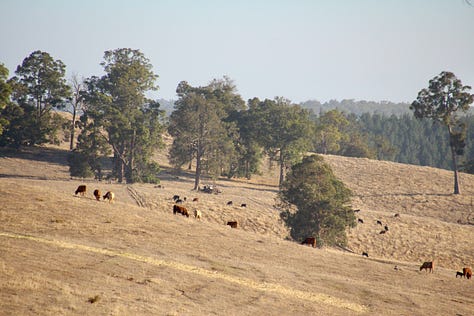
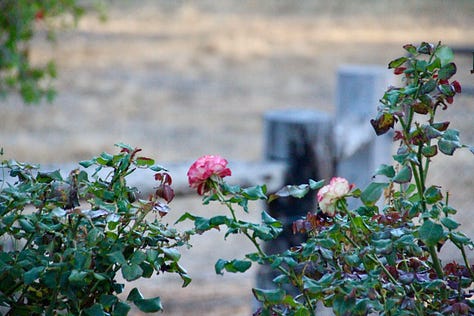
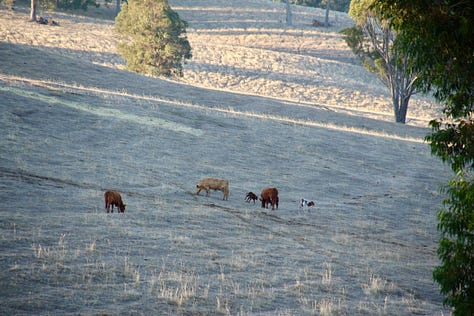

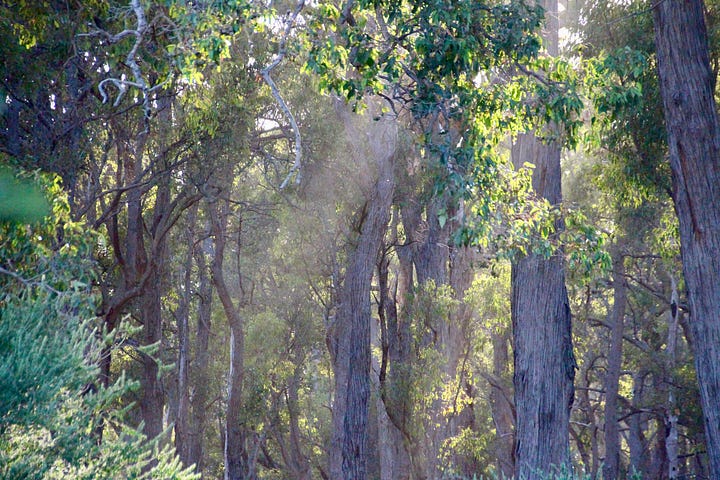
Later, after a few hours in town, A opts for a nap, and I take out my watercolours and play, painting flowers, a whale. But it’s hard to concentrate; my eyes dart around like the fairy wrens, honeyeaters, robins, willy wagtails and silvereyes that won’t stay still long enough for a photo. Fat bees sip nectar from a swaying rainbow of flowers: purple, pink, red, sunset roses. A crow caws, a drawling sound: aaaahhhhh! As cows low in the distance, I wander barefoot to the fig tree, startling a rosella that is gorging on a plump fruit. I help myself to a purple fig and bite; it has a subtle sweetness, and I pick a handful more to have with our dinner. Later we will slice the fruit and eat it with cheese, prosciutto and olives; now, I help myself to another ripe fig, before moving on to the apples, biting deep into a blushing pink specimen. Juice dribbles down my chin and I wipe it away with the back of my hand. There is something freeing about eating this way. Eating outdoors, under a vast blue sky. It reminds me of a time I went apricot picking with my dad - one for me, one for the basket. That time I snuck off to pick mulberries, staining my sneaky little fingers red, and wondered how Dad could tell what I’d been up to. I hold onto this memory for a while; my father is in hospital on the other side of the country and I am waiting for news.
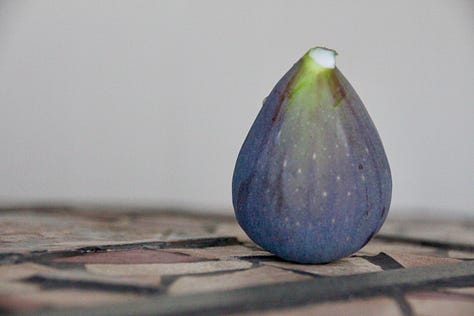
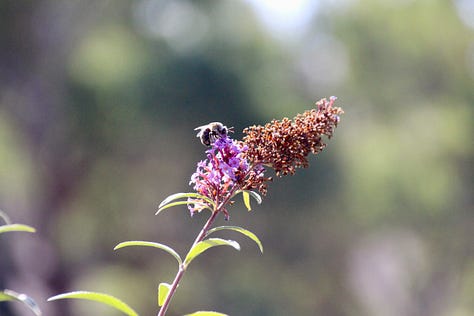

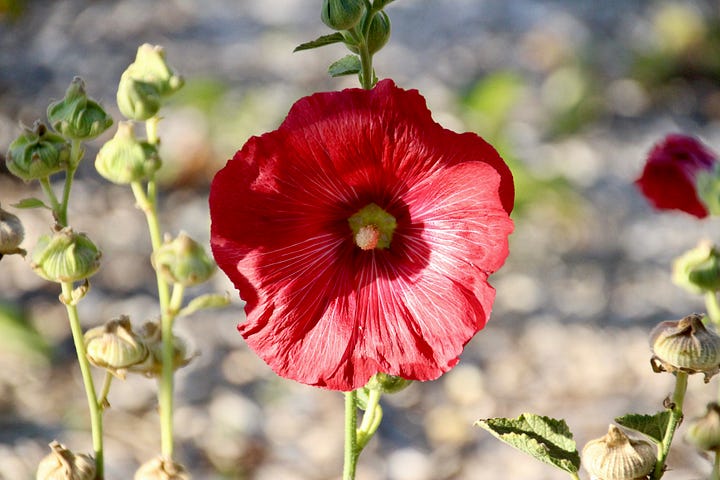
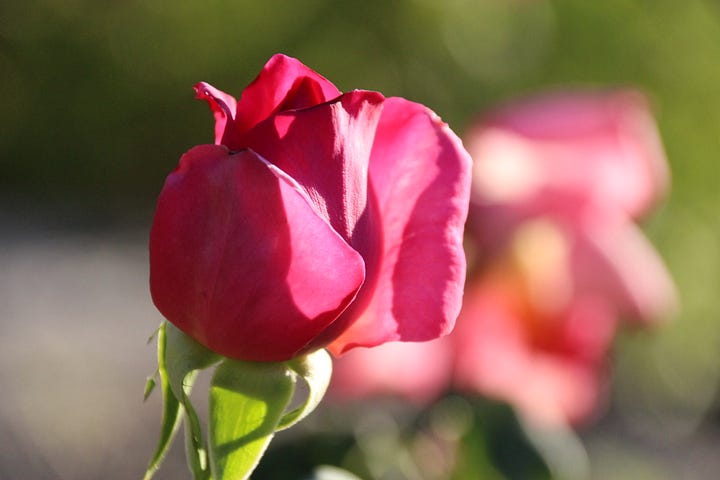
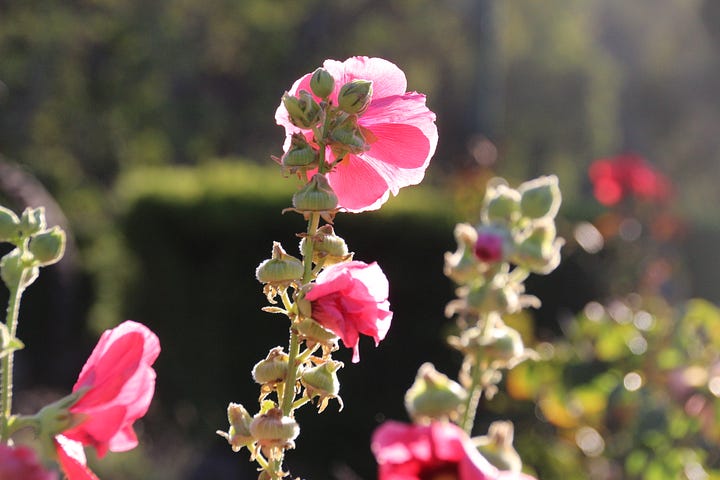
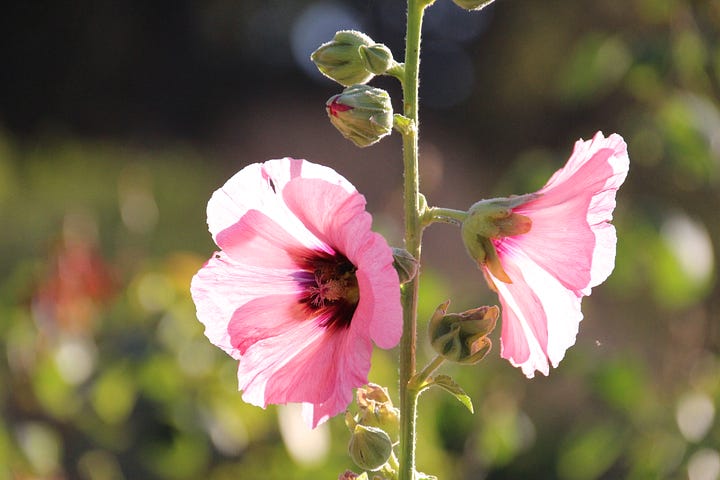
Back on the verandah, I muse about the powerful connections between food and memories. About why we remember some foods and food experiences more than others. About “Proustian moments”, the involuntary memories that evoke your past, often triggered by a scent or a taste (the term comes from French writer Marcel Proust’s famous novel In Search of Lost Time, where he recounts how eating a madeleine cake reminds him of his aunt dipping a madeleine in her tea). These memories are often shaped by a significant circumstance - a place, or perhaps something you experienced in childhood. Maybe it is a romantic memory, a broken heart, loss, the first time something happened. Maybe it is the person who cooked the meal, rather than the food itself.
Chicken fricassee
I only remember my grandmother cooking chicken fricassee once. She would often cook roast chicken, buttery and crisp, and my sister and I would fight for the wings. Or beef rouladen or pork pot roast with a gravy so tasty I would fill a cup with it - always the same red cup - and spoon it slowly - always with a teaspoon - while reading a book in a corner of her small home. Sometimes there would be schnitzel or crumbed fillets of redfish, but the chicken fricassee was new to me when, at 19, she invited me over for dinner, a rare occasion when I had her to myself. I remember asking what the unfamiliar, simple but tasty dish was, and she said chicken fricassee, like I should have known; for years, I could not have told you how it tasted, but I knew how it made me feel. Loved.
She never passed on the recipe. By the time I was married, two years later, she was in a nursing home. I have been searching for something like Oma’s recipe for years, and more than thirty years later, I have finally found it.
To make the fricassee you need half a pre-cooked chicken, chicken stock, butter, a jar of white asparagus in brine, flour and salt and white pepper. Earlier, I made a chicken stock with a whole chicken, bay leaves, an onion, celery leaves, peppercorns and a carrot. A jug of fragrant stock cools now as I gather my ingredients, chop the chicken, and separate the asparagus from the brine, chopping the soft vegetables and reserving the brine in another jug.
At the stove, butter melts into a golden puddle. To this, I add flour, stirring the mix into a thick paste for two minutes before adding the stock, splash by splash, followed by the asparagus brine. As it thickens, I slide in the chopped chicken and asparagus, seasoning to taste with salt and white pepper, before leaving the stew to simmer for a few minutes. I close my eyes and taste; I am back in my grandmother’s little granny flat and she is smiling at me with pure, unconditional love, urging me to have more mashed potatoes, more of her uncomplicated comfort food. I open my eyes; I am back in my kitchen and the rice is ready. As an afterthought, I grate the zest of a lemon into the fricassee, my own little touch. I imagine Oma would have turned her nose up at that.
We light a candle and tuck into our meal, and I think, this is what I remember eating with Oma. But although I have replicated the taste as closely as I can, based on a thirty-year old memory, it is not the same. The circumstances are different. You can choose or cook foods to manipulate a mood or bring back fond memories, but it will always be a soft-edged version of the original experience, an old photo faded by time.
There are several bush tracks on the farm, so we walk in the golden hour, under towering marri, among rain-starved bracken. This time of year there are no wildflowers, but there is an evening chorus of birds, the dry scuttle of an invisible creature - a lizard? - and the occasional kangaroo, startled into a bounding escape. And a nest, abandoned. A feather, glinting in a ray of light. I pocket the feather for my bowl of found treasures at home. At the end of a red dirt road, a canopy of trees leads into a bucolic dream. Hungry, we return to the cottage, past red-tailed cockatoos gossiping on a rusting bathtub.


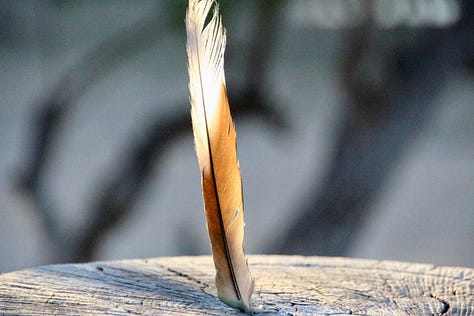
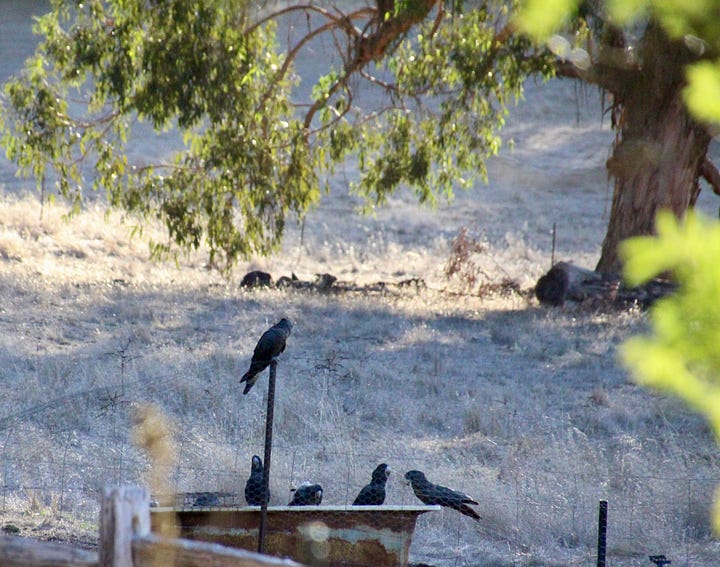

We sit on the verandah, a cheese platter and a glass of red wine each on the table between us. Watching the birds: red-tailed cockatoos perched high in marri, invisible magpies carolling, a raven cawing. There’s an avian dance party in the fig trees: silvereyes, parrots, rosellas and wrens. Fairy wrens loop-the-loop in the grevilleas. The chorus line retreats behind dusk’s curtain; we trade food memories, some shared, others from another time, another place, other people. We discover that it is not the five-star (there haven’t been many of those) restaurants, the smorgasboards or buffets that are the most memorable or evocative. It is not the degustation experience we shared for my birthday last month, delicious as it was. No, the food memories that are lodged deep in the pantries of our minds look like this:
I am eating pears on the summit of Mount Kosciuszko (NSW, Australia) while an air force jet streaks past.
I am about eleven years old, eating damper cooked on sticks over a fire on a farm in western NSW. Butter and honey drips down chin, over my hands; I can’t believe the farmer’s children are allowed to light a fire, let alone cook something without adults around.
I am camping in the Blue Mountains with the Girls Friendly Society (an Anglican version of Brownies); we roast foil-wrapped bananas with marshmallows and choc chips, a sticky-sweet delight.
A box of cherries from a roadside stand, flicking the pips out of the sunroof.
I am eighteen and sitting around a fire with new university friends on a wintry night; we take turns reading poetry while passing around a tub of ice cream, not caring about the shared spoon.
We are at Zugspitze (Germany), eating seeded buns with schinken and käse while skiiers slide past.
Cheese and wine and a proposal at the beach.
Ham-and-cheese sandwiches after a testing bushwalk in a wildlife sanctuary north of Perth.
Fancy sandwiches from Fortnum and Mason (all we could afford) eaten on a bench in Green Park, London. At Kew Gardens, we picnic on pies brought from a market at Putney Bridge earlier that day, realising belatedly we are in the Australian section of the famous gardens, and suddenly, sitting under the eucalypts, we are a teeny bit homesick.
Impromptu dessert-first nights with the kids - ice cream at the park, followed by hot chips or pizza. My two sons still remember these nights. It was just the three of us and, in all innocence, we called them “naughty nights” back then, simply because it was naughty to eat dessert first, they said. They don’t know this idea was a coping mechanism for when things were really difficult at home, a way to pretend (for the boys) that everything was OK when they most definitely weren’t.
We are walking around the Weinachtsmarkt (Christmas markets), bickering over who drank most of the mulled gin and Feuerzangenbowle. It was you. No, you did! We buy another glass to share.
A star appears. A satellite streaks across the sky. Perhaps these are not true “Proustian moments”, more a dredging of our memory banks, a way to connect, to reminisce, to share a feeling of nostalgia as another day in our life together ends. And yet, here we are, outside, sharing food memories, many of which were experienced in outside spaces and places. Does food taste better outside, in the fresh air, we wonder? Does it taste better when the view transcends walls? To me, the joy of eating outside never fades.
In bed, I wonder if I’ll write another food fiction book like Wherever You Go, my debut in Australia, set in the same country town we are visiting this weekend. Food has always been a big part of my life, and I loved making it part of my creative life. I decide to paint a fig the next day, and fall asleep.
The next morning, wrapped in fluffy dressing gowns, we eat on the verandah once more. This time, it’s home-made muesli topped with yoghurt and slices of mango we grew in our own backyard. Later, we eat pies in a former mill town, drive through the karri forest in search of a winery we visited once; we stand before a 500-year-old, 45-metre high jarrah tree, placing our hands on its wide, solid trunk. We stop at a coffee roasters for flat whites and buy truffle salt to season a future roast chicken … or maybe sprinkled on butter-fried eggs on sourdough when we get home. And then we drive to a honesty-system roadside stand run by two children, Bella and Bryn, and stock up on leeks, corn, eggs, jam, avocados and a rhubarb plant. We add this fresh, seasonal produce to the fresh and dried figs, and plums and apples our hosts have given us. Back at the farm, we feed the chickens, and pick fruit; I remember to paint a fig and then I eat it. That night, we drink wine on our host’s verandah and watch a newborn calf take its tottering first steps. They tell us their love story - childhood sweethearts who reconnected twenty years (ish) later. It’s the stuff soap operas are made of - scandal and drama, with a happy ending on a farm in a place called Sunnyside.
On Sunday morning, we pack the car and head into town, stopping for breakfast with friends we made when I launched my book in early 2021, between lockdowns. And then we drive home, where a disgruntled cat awaits, laundry has to be done, and the reality of our day jobs is less than 12 hours away. We bring home fresh fruit and vegetables, and open up the real estate tabs on our internet browser. My job finishes in nine weeks and I will have to learn how to slow down. But … what if we could both slow down?
What if?
A Life (Extra) Ordinary is a gift of words and the main posts will continue to be free for all readers for the foreseeable future. However, if you feel led to support my writing, you can take out a paid subscription for a small monthly amount. Creating these posts takes time, and your ongoing support of my time and creativity is greatly appreciated.
Either way, I am grateful that you have chosen to be here today, to be part of my community of readers and writers pausing to notice. Let’s keep connecting as a community and building each other up.
PS. You might like these posts too.











This is truly beautiful, Monique 🥰
Food memories are so incredibly important to us, I don’t think people realise just how important the gathering and the place and the people around you are, as well as what you’re actually eating.
The simplest cheese and Vegemite sandwich can be memorable if eaten in a garden with bandicoots scampering past, the sun blinking behind the leaves, and the simple knowledge that nothing else is calling on your time for an hour.
Thank you for writing this. I love it 🥰🥰
Such a lovely post Monique! I love how you thread in the wildlife and nature you have seen in your posts. 😊 I have very fond memories of me and my parents walking to an abandoned house in Portugal (near our own) to pick the figs that grew in the overgrown trees there. Fresh figs are just amazing! ✨️